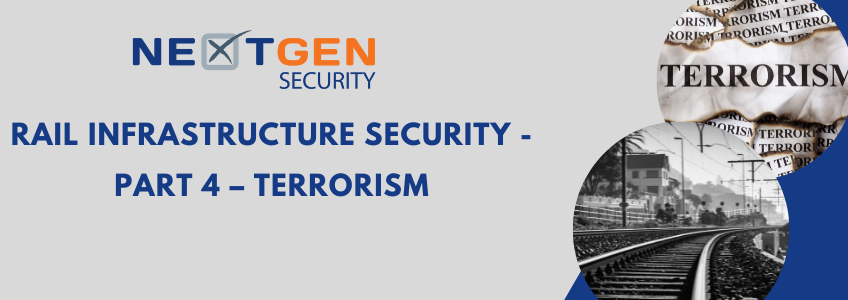As is the case with all critical infrastructure, railways are susceptible to a whole host of security threats. According to the Department of Homeland Security, just some of them that are common to the rail industry include criminal sabotage, vandalism, tampering with and theft of railroad equipment, and intentional harassment.
Terrorism also ranks as one of the most significant threats against both passenger and freight railroads. The vast amount of railroad assets, spanning passenger and freight cars, train stations and depots, bridges, tunnels, and thousands of miles of unprotected tracks, present a wide breadth of targeting opportunities for terrorists.
According to a Strategic Sector Assessment prepared with input from the Federal infrastructure partners and the private sector, the U.S. commercial passenger and freight rail systems are vulnerable to terrorist attack because of their public accessibility and the difficulty in securing a vast array of railroad assets. Passenger trains and stations are especially attractive terrorist targets because of the large number of people in a concentrated area. A terrorist attack against freight rail, the Assessment contends, would require more complex planning, timing, and execution to cause high casualties or costly economic damage.
It also asserts that terrorists’ effective use of improvised explosive devices (IEDs) in rail attacks elsewhere in the world suggests that this method is preferred and poses the greatest threat to U.S. rails, although DHS cannot discount the possible use of chemical, biological, or radiological attacks. Steps the industry has taken since the September 2001 attacks have improved rail security, but additional measures are needed, including larger numbers of security personnel and greater use of technological tools.
NextGen brings that technological expertise to the rail industry and implements the advanced security solutions it needs to address its inherent challenges. Consider, for example, the fact that the multiple entrances and exits of trains and train stations are typically unsupervised and lack camera surveillance, making it easier for individuals to maintain anonymity. Although many rail systems do use their own security and engineering crews to monitor the trains, stations, and tracks, their ability to provide adequate protection is limited. A robust video surveillance system coupled with a mass communication system and real-time monitoring capabilities allow for a faster and more effective response.
In addition, there are several technologies emerging that are modernizing railway security and improving operational efficiencies. 3D mapping technologies and artificial intelligence (AI), for example, have been instrumental in reducing disruptions and safeguarding rail assets, passengers and personnel. As reported in a recent Mass Transit article, 3D mapping technologies can be further broken down into hardware as well as software components, both of which play a critical role in protecting rail infrastructure. By creating a complete, up-to-date, and easy-to-understand map, human operators can more quickly predict and detect potential security threats, then make the most informed decisions about what to do next. Of the hardware mapping components, LiDAR (Light Detection and Ranging) sensors use lasers to scan and quickly identify physical changes within the rail environment in high-value areas, perimeters and zones, such as tunnels and rolling stock. LiDAR technology can assess an environment much more quickly than a rail operator could manually. And the quicker an issue is detected, the faster an appropriate response can be made before an event like a service disruption, or something more catastrophic, such as collision or derailment.
Adept in serving the critical infrastructure sector, we at NextGen can implement the various security technologies needed to better safeguard your railway and its smooth operations. Call on us to learn more.

